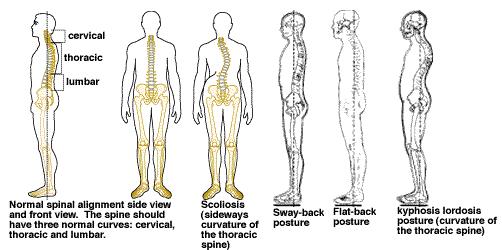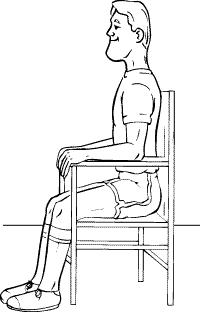How to edit my body metrics present in the me tab?
Tap on the metric you want to edit and continue with the on screen instructions.
How to edit the timing of my reminders?
Tap on the reminder time and follow the instruction on the screen to continue edit.
What do the text beneath the toggle button in reminders screen signify?
This text signifies the recommended time for performing that particular task
What is the significance of the value beneath every body metric in My Analysis screen?
First number before the arrow signify the body metric value during the start of your goal. Second number after the arrow signify the current value of the corresponding body metric. If there is only one number there, that implies there is no change in the value of the body metric from the start of the goal to current day.
What does the Red and Green colors signify in the My Analysis screen or Goal Card in Home screen?
Green signify that your corresponding body metric measurement is ideal where as red signifies abnormality and requires attention.
What are the three circles present in the Goal card in home screen signify?
They signify your weight during the start of the goal, current weight and short term target weight and the target date by which you can accomplish it.
What is the water glass size?
It is 250 ml
What is the best time for me to workout?
Research states that most of us are at our peak energy state between 5 PM to 7 PM. If feasible schedule your workout sessions during this time. If this timing doesn't workout for you try sticking to a fixed time according to your convenience
Where to check my tracked workouts, diet and water intake?
You can check your tracked workouts, diet and water intake by tapping on the Analysis "Today's Goal" card corresponding to workouts, diet and water respectively
Measuring Guidelines
Weight
Weigh yourself before eating breakfast in the morning, after using the bathroom. If you weigh yourself this same way every day, you can get a more accurate depiction of your weight. Stand on the scale and wait for the reading.
Fat Percentage
Body Fat Skin fold Calipers: Pick up a caliper. Pull the fat away from your muscles, pinch them with the caliper, take the measurements.
Bio electrical Impedance Analysis (BIA) is a method of measuring body fat percent by sending a low-level, safe, electrical current through the body. It is one simple method of determining a person's body composition and body fat percentage.
Heart Rate
Find your pulse at your wrist (the radial artery) or at your carotid artery in your neck. Using your index and middle finger, count the number of beats you feel in 10 seconds. Do not use your thumb since it has a light pulse that can confuse you while counting. Multiply the number of beats you count in 10 seconds by six to find the number of beats per minute. You can take your pulse three times, then take the average rate of all three to be super scientific.
Blood Pressure
To monitor your blood pressure using an automatic blood pressure monitor, find a comfortable place to sit with good back support at a table or desk. When you're ready to take your blood pressure, sit quietly for three to five minutes beforehand. Place your feet flat on the floor and rest your arm on a tabletop even with your heart. Lean against the back of the chair. Stretch out your arm, palm upward.
Place the cuff on your bare upper arm one inch above the bend of your elbow. Make sure the tubing falls over the front center of your arm so that the sensor is correctly placed. Pull the end of the cuff so that it's evenly tight around your arm. You should place it tight enough so that you can only slip two fingertips under the top edge of the cuff. Make sure your skin doesn't pinch when the cuff inflates.
To get started, wait a moment, then press start. Remain still and quiet as the machine begins measuring. The cuff will inflate, then slowly deflate so that the machine can take your measurement. When the reading is complete, the monitor displays your blood pressure and pulse on the digital panel. If the monitor doesn't record a reading, reposition the cuff and try again. Rest quietly and wait about one to two minutes before taking another measurement. Record your numbers, either by writing the information down or by entering the information into an electronic personal health record. Some monitors can upload your blood pressure readings automatically into a computer or mobile device.
Harvard Step Test
Sit and Reach Flexibility Test
This test involves sitting on the floor (following a warm-up) with legs out straight ahead. Your feet, with your shoes off, are placed with the soles flat against the sit and reach box, shoulder-width apart. Both knees are held flat against the floor by the tester. With hands on top of each other and palms facing down, the subject reaches forward along the measuring line as far as possible. After three practice reaches, the fourth reach is held for at least two seconds while the distance is recorded. Movement should not be jerky, and the fingertips should remain level and the legs flat. The score is recorded to the nearest centimeter or half inch as the distance reached by the hand. This also depends on the scale being used; there are many variations. Fatal Fitness sets the measurement zeroed at 15 inches (in line with the heel of the foot).
Shoulder Reach Test
Purpose: To test the flexibility of the shoulder joint, which is important for injury prevention and in particular is important in swimming, racket sports and throwing sports. Equipment required: ruler or tape measure. Procedure: Test your left shoulder by standing with your right arm straight up, then bend your elbow so your hand hangs behind your head. Keeping your upper arm stationary, rest your palm between your shoulder blades. Reach around behind you with your left arm so the palm is facing out and try to touch the fingers of both hands together. Reverse the procedure and repeat with the opposite shoulder. Scoring: measure the minimum distance between hands. Good: Fingers are touching. Fair: Fingertips are not touching but are less than two inches (5cm) apart. Poor: Fingertips are greater than two inches (5cm) apart.
Blood Glucose Test
Blood glucose tests are either random or fasting tests. For a fasting blood glucose test, you can’t eat or drink anything but water for eight hours before your test. You may want to schedule a fasting glucose test first thing in the morning so you don’t have to fast during the day. You may eat and drink before a random glucose test. Fasting tests are more common because they provide more accurate results and are easier to interpret. Before your test, tell your doctor about the medications you’re taking, including prescriptions, over-the-counter drugs, and herbal supplements. Certain medications can affect blood glucose levels. Your doctor may ask you to stop taking a particular medication or to change the dosage before your test temporarily. What to expect during a blood glucose test: This simple test involves giving a small sample of blood. The sample can most likely be collected with a very simple prick to a finger. If you need other tests, your doctor may require a blood draw from a vein. Before drawing blood, the healthcare provider performing the draw cleans the area with an antiseptic to kill any germs. They next tie an elastic band around your upper arm, causing your veins to swell with blood. Once a vein is found, they insert a sterile needle into it. Your blood is then drawn into a tube attached to the needle. You may feel slight to moderate pain when the needle goes in, but you can reduce the pain by relaxing your arm. When they’re finished drawing blood, the healthcare provider removes the needle and places a bandage over the puncture site. Pressure will be applied to the puncture site for a few minutes to prevent bruising. The sample of blood is then sent to a lab for testing. Your doctor will follow up with you to discuss the results.
Bone Mineral Density
https://www.bones.nih.gov/health-info/bone/bone-health/bone-mass-measurement-what-numbers-mean
T3, T4 and TSH Test
Talk to your doctor about any medications you’re taking, and tell your doctor if you’re pregnant. Certain medications and being pregnant may influence your test results. A blood draw, also known as venipuncture, is a procedure performed at a lab or a doctor’s office. When you arrive for the test, you’ll be asked to sit in a comfortable chair or lie down on a cot or gurney. If you’re wearing long sleeves, you’ll be asked to roll up one sleeve or to remove your arm from the sleeve. A technician or nurse will tie a band of rubber tightly around your upper arm to make the veins swell with blood. Once the technician has found an appropriate vein, they’ll insert a needle under the skin and into the vein. You may feel a sharp prick when the needle punctures your skin. The technician will collect your blood in test tubes and send it to a laboratory for analysis. When the technician has gathered the amount of blood needed for the tests, they’ll withdraw the needle and place pressure on the puncture wound until the bleeding stops. The technician will then place a small bandage over the wound. You should be able to return to your normal daily activities immediately.






